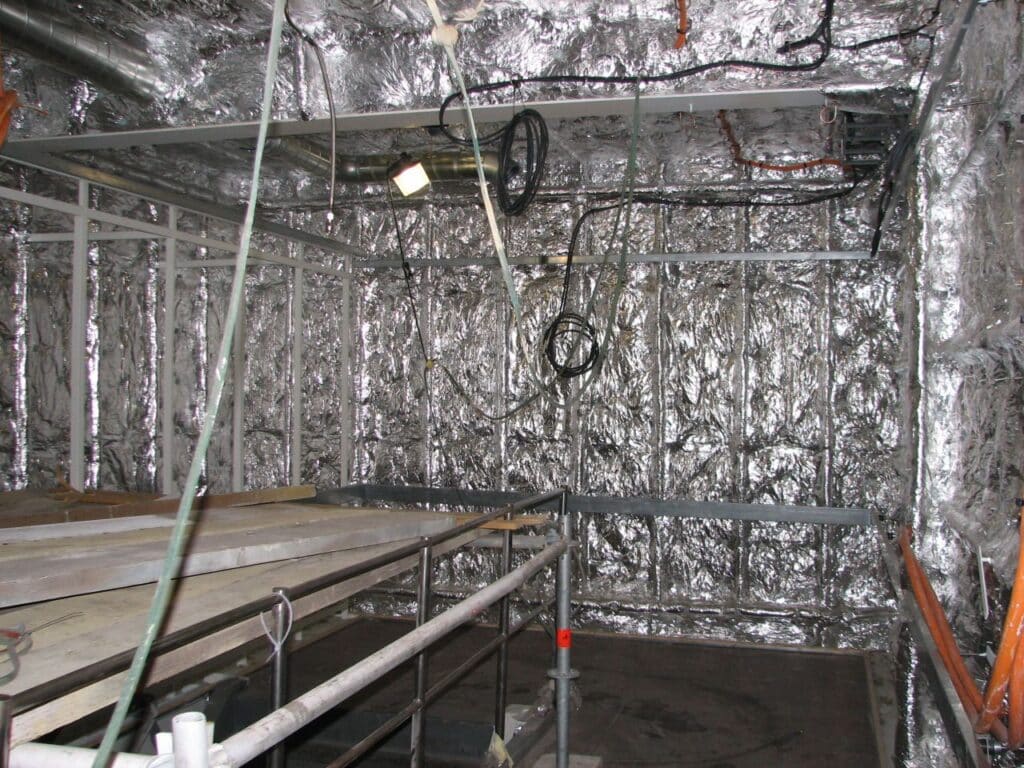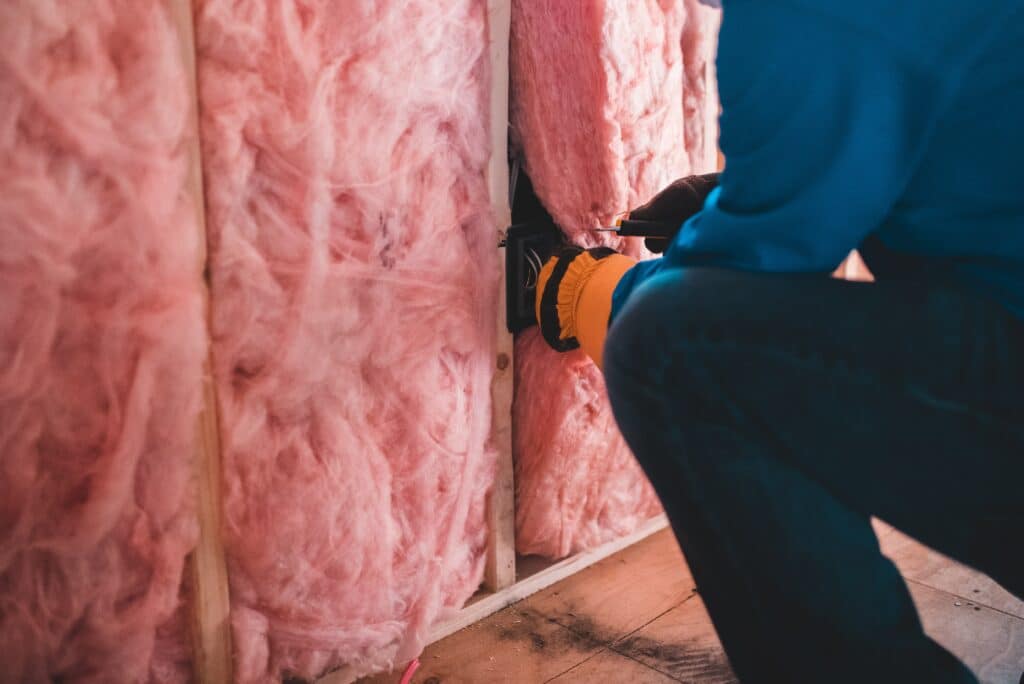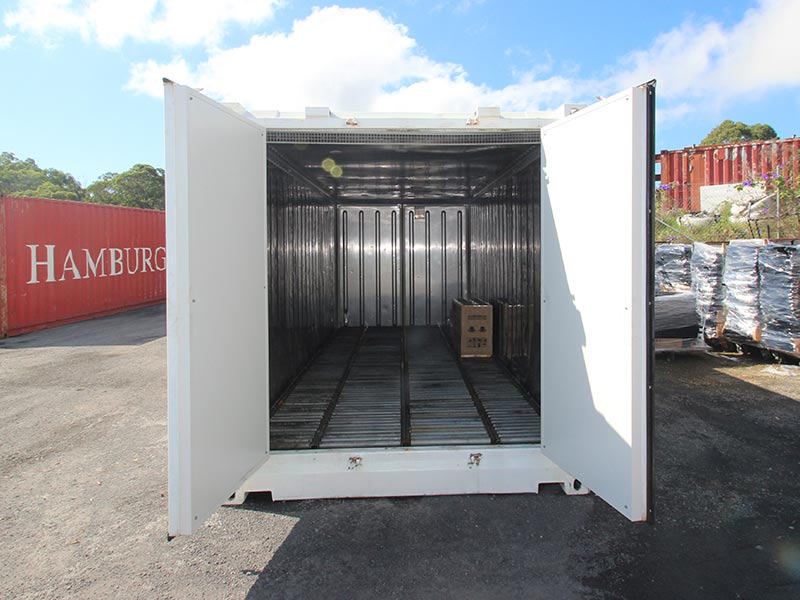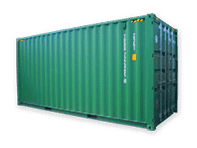From Scorching Sun to Chilling Winds: Why Insulating Your Shipping Container is Crucial
Insulating your shipping container is key to transforming it into a comfortable and energy-efficient space, especially in Australia’s extreme climates. Turn your container into a cozy haven against Australia’s wild weather with this easy insulation guide! In Australia, where the climate ranges from scorching heat to chilling cold, ensuring your shipping container is properly insulated is crucial for comfort and energy efficiency. This comprehensive guide, presented by Port Shipping Containers, a leading provider of shipping container solutions in Australia, will expertly guide you through the essentials of insulating your container. By following these guidelines, you can create a space that is not only comfortable and energy-efficient but also perfectly suited to Australian conditions.
Understanding the Importance of Insulation

The Australian Climate Challenge
Australia’s diverse climate, ranging from scorching desert heat to icy alpine chill, presents unique challenges when it comes to crafting a comfortable interior space within a shipping container. In this land of extreme temperatures, insulation is not just a mere luxury; it becomes an imperative for both energy efficiency and optimal comfort.
By effectively insulating the container, we can create a haven that shields against the blistering sun, the biting cold, and everything in between, ensuring a pleasant and inviting environment regardless of the external conditions. So, whether you seek refuge from the sweltering summer or seek respite from the freezing winter, proper insulation is the key to transforming a shipping container into a cozy and habitable space that adapts to Australia’s ever-changing climate.
Benefits of Proper Insulation
Properly insulating your shipping container offers a multitude of benefits that can greatly enhance its functionality and performance:
- Temperature Regulation: By effectively insulating your container, you can ensure a consistent internal temperature, regardless of external weather conditions. This is particularly important for sensitive cargo that needs to be protected from extreme heat or cold.
- Energy Efficiency: Insulation plays a crucial role in reducing heat transfer, which can result in lower energy consumption. With proper insulation, you can minimize the need for excessive heating or cooling, leading to significant energy savings and reduced environmental impact.
- Condensation Prevention: One of the key challenges in shipping containers is the risk of condensation. Poor insulation can lead to moisture buildup, which in turn can cause mold growth and corrosion. By insulating your container, you create a barrier that helps minimize condensation, ensuring the safety and preservation of your cargo.
- Acoustic Advantages: Insulation not only provides thermal benefits but also acts as a sound barrier. This can be particularly beneficial if you are transporting goods that are sensitive to noise or if you are looking to create a quieter working environment around the container.
Choosing the Right Insulation Material

Factors to Consider
When selecting the right insulation material, it is crucial to consider several factors that can greatly impact its effectiveness. Let’s delve into the following key aspects:
- Thermal Performance: One of the primary considerations is the material’s ability to resist heat flow, commonly measured by its R-values. By assessing the thermal performance, you can ensure that the chosen insulation material will effectively regulate temperature and minimize energy loss.
- Climate Suitability: Another crucial factor is choosing an insulation material that performs well in Australian climates. Considering the specific weather patterns and temperature ranges of your location can help you select an insulation material that is best suited to withstand the unique demands of your environment.
- Space Constraints: It’s important to take into account the available space and any limitations you may have, especially when dealing with confined spaces like a shipping container. Opting for compact insulation materials can help maximize the utilization of space without compromising on performance.
- Environmental Impact: If sustainability is a priority, exploring eco-friendly insulation options is highly recommended. Consider materials that are made from recycled or renewable resources, as well as those with low embodied energy and minimal environmental impact throughout their lifecycle.
Popular Insulation Materials
- Spray Foam Insulation: Provides exceptional thermal resistance and effective air sealing. Particularly well-suited for insulating irregular spaces and corners.
- Panel Insulation: Rigid panels such as EPS, XPS, or polyisocyanurate are simple to install and offer excellent thermal resistance.
- Blanket Insulation: Fiberglass or mineral wool blankets are cost-effective options that are suitable for DIY projects.
- Eco-Friendly Options: Embrace sustainable insulation solutions with materials like sheep’s wool or recycled cotton.
Step-by-Step Insulation Process
Preparing the Container
- Interior Cleaning: Before you begin, ensure that the container is thoroughly cleaned and completely dry. Removing any dust, debris, or residue will help maintain the quality and functionality of the container for long-term usage.
- Tackle Rust and Damage: It is crucial to promptly address any signs of rust or damage on the container’s surface. By taking immediate action, you can prevent potential complications in the future and prolong the lifespan of the container. Regular inspections and timely repairs will help maintain its structural integrity and ensure optimal performance.
Installation Process
- Measure and Cut the Insulation: Start by carefully measuring the dimensions of the walls, ceiling, and floor of the container. Use these measurements to precisely cut the insulation material, ensuring a perfect fit and maximum effectiveness in retaining heat or cold.
- Apply the Insulation: If you choose to use spray foam insulation, it is highly recommended to hire professionals for the job. Their expertise will ensure that the spray foam is applied uniformly, covering all areas and minimizing any potential gaps. Alternatively, if you opt for insulation panels or blankets, make sure to securely fit them into place, ensuring a tight seal to prevent any air leakage.
- Seal and Cover: Once the insulation is in place, it is crucial to seal any remaining gaps or openings. This can be done using suitable tape or sealant, ensuring that there are no areas left exposed. Additionally, if you are using blanket insulation, it is advisable to cover it with a vapor barrier for added protection against moisture.
Finishing Touches
- Install Interior Walls: Once the insulation is in place, proceed with the installation of interior walls. Plywood or drywall are commonly used materials for this purpose. It is important to carefully measure and cut the panels to fit properly, ensuring a snug and secure fit. Additionally, consider using soundproofing materials to enhance privacy and reduce noise transmission between rooms.
- Electrical and Plumbing: Before sealing the walls, ensure that any necessary electrical wiring or plumbing is integrated if needed. This step should be completed before proceeding further. It is crucial to hire a licensed electrician and plumber to ensure proper installation and compliance with building codes. Attention to detail at this stage will prevent future issues and make the space more functional and convenient for occupants.
Tips for Maximizing Insulation Efficiency
- Airtight Sealing: It is important to ensure that all seams and gaps are properly sealed to create an airtight environment.
- Vapor Barrier: To prevent moisture penetration, it is recommended to use a vapor barrier.
- Ventilation: Adequate ventilation plays a crucial role in preventing the buildup of moisture.
Concluding Thoughts
Insulating a shipping container is a transformative process that turns a simple steel box into a comfortable and energy-efficient space. Whether you’re creating a cozy home, an innovative office, or a unique commercial space, proper insulation is crucial for maximizing comfort and functionality.
At Port Shipping Containers, we understand the significance of high-quality insulation in the Australian context. We are committed to providing solutions that cater to your needs. With our expertise in shipping container modification, we ensure that your insulated container not only offers a functional space but also showcases efficiency and innovation.
If you’re interested in exploring more about shipping container solutions, we invite you to connect with our team at Port Shipping Containers. We will guide you through every step of your shipping container journey, ensuring a result that not only serves its purpose but also reflects your vision and requirements.









